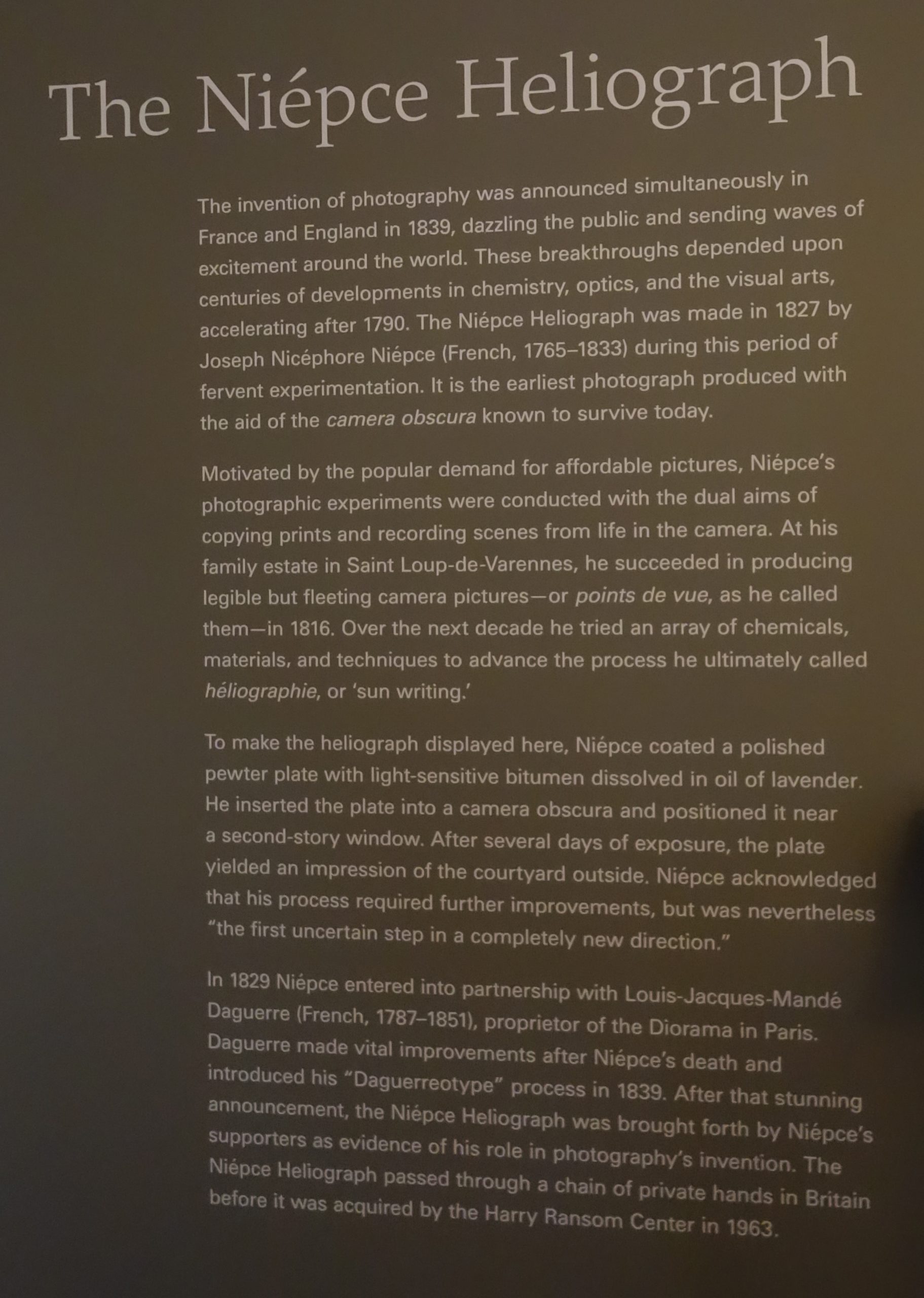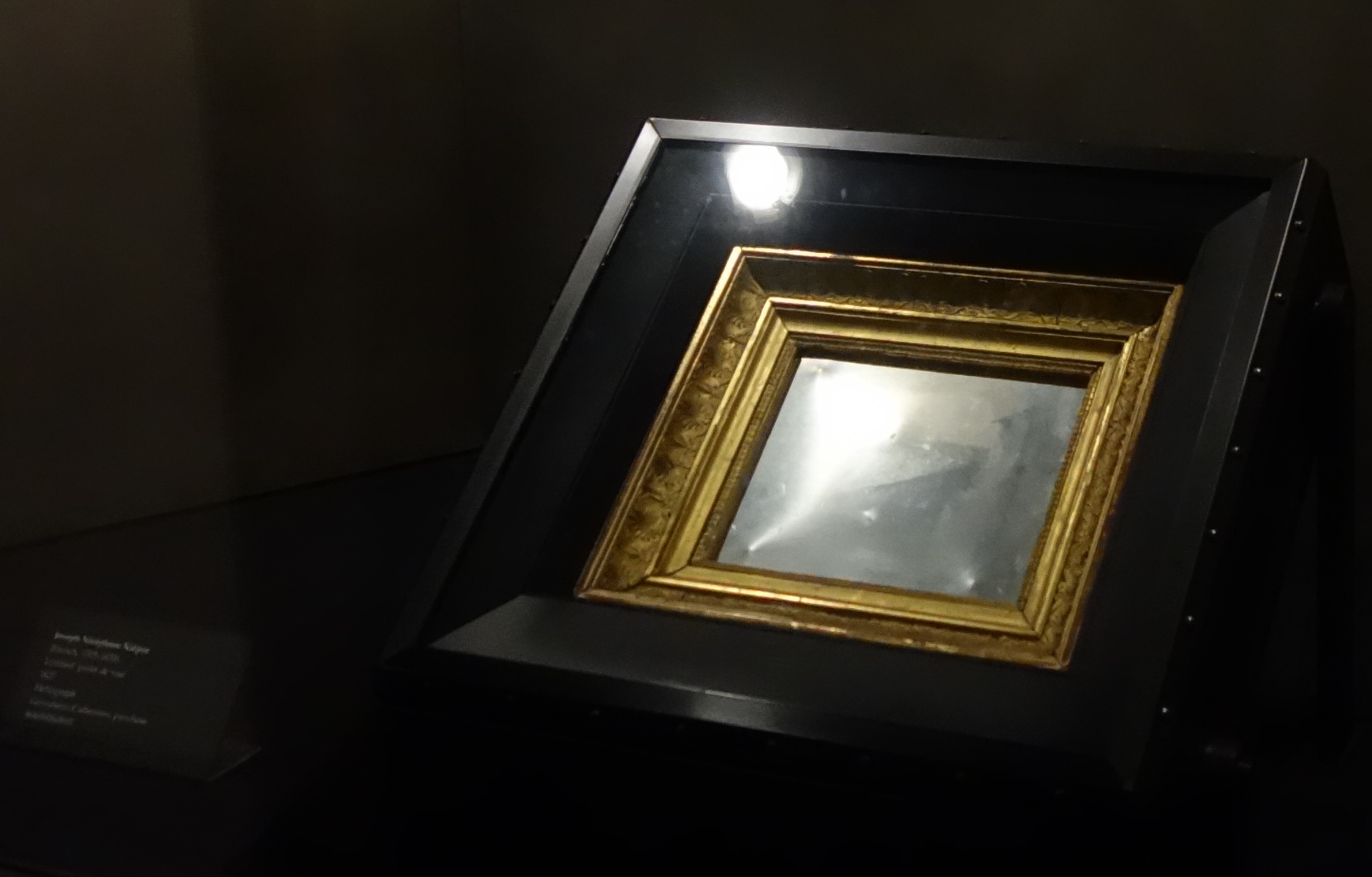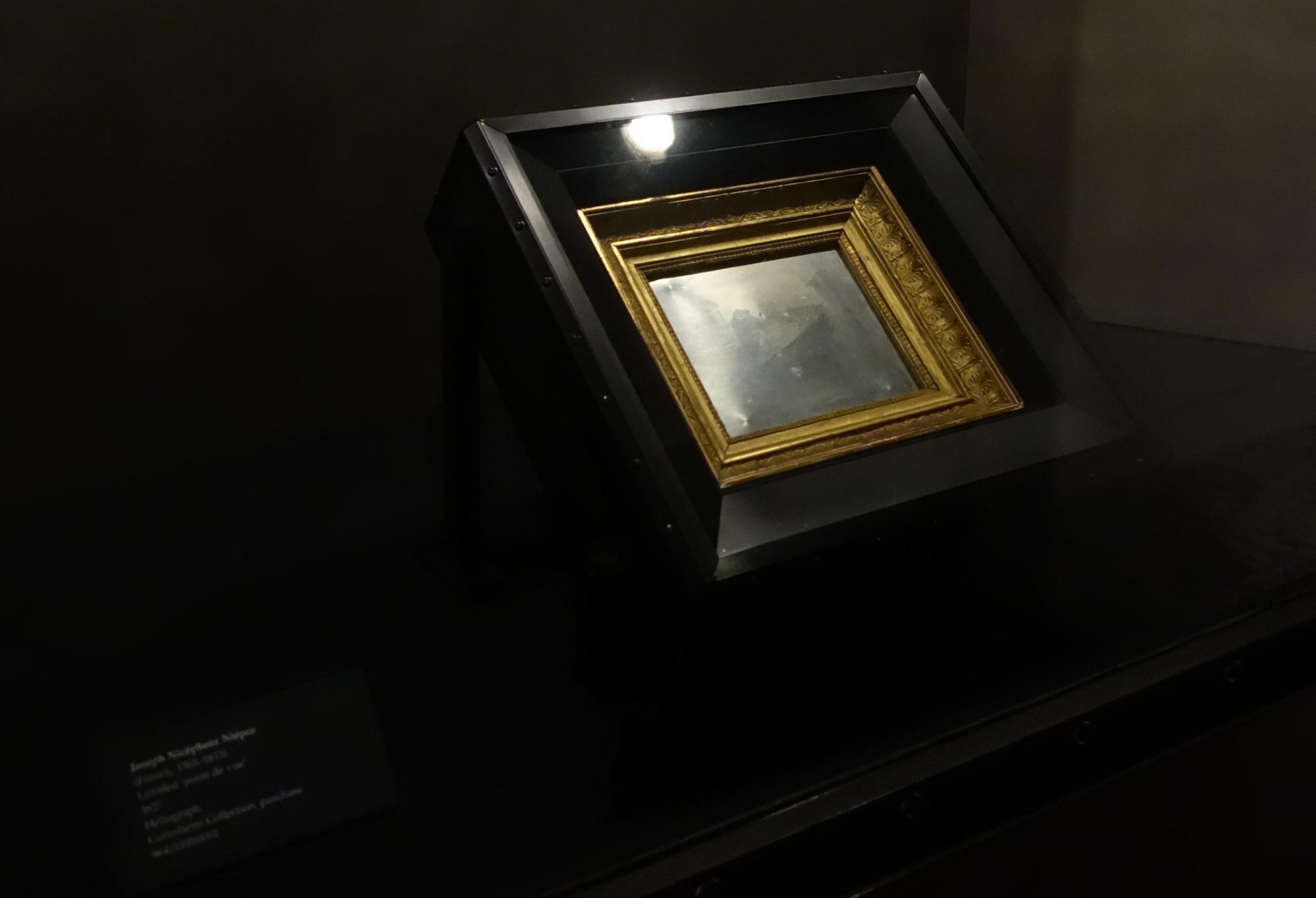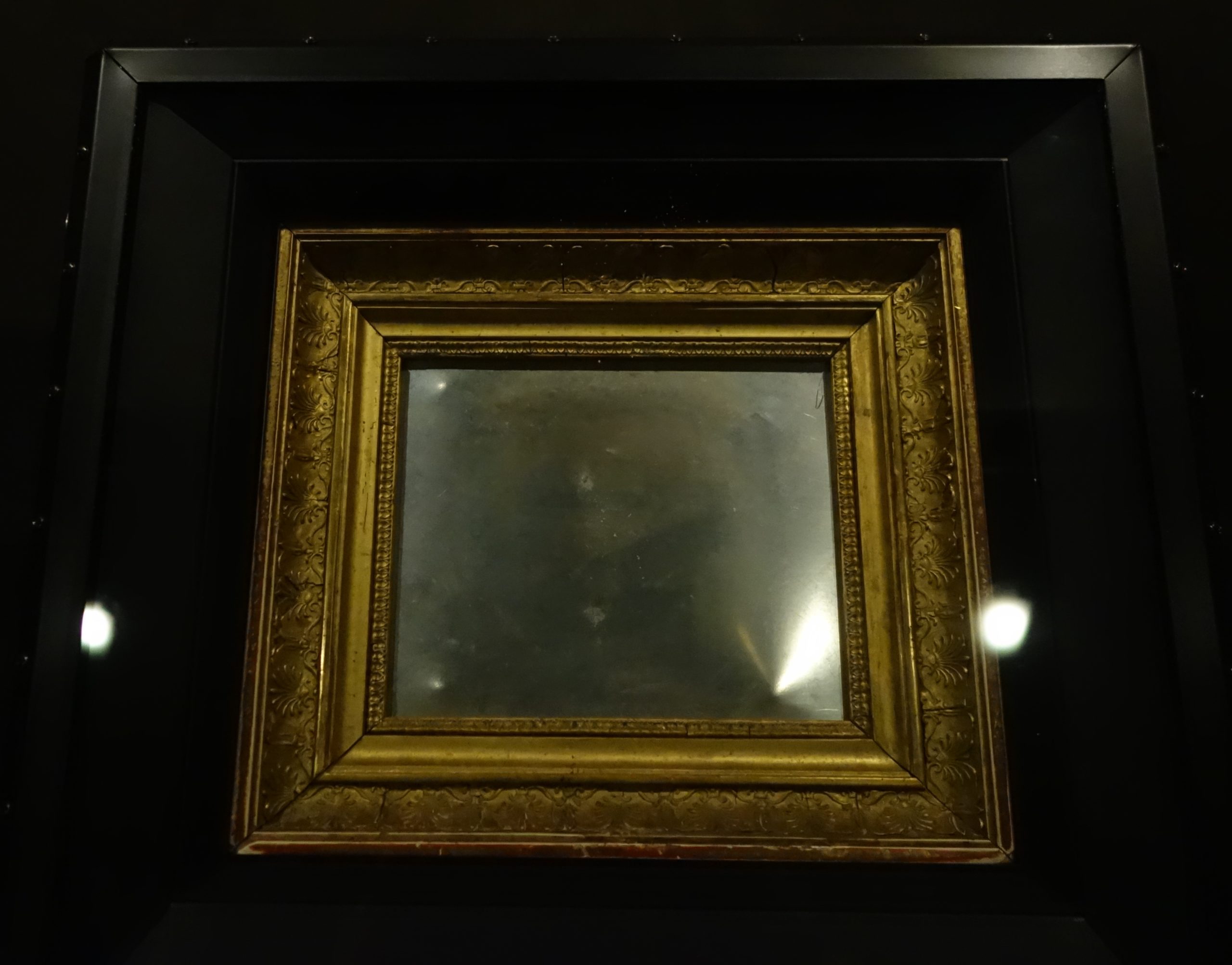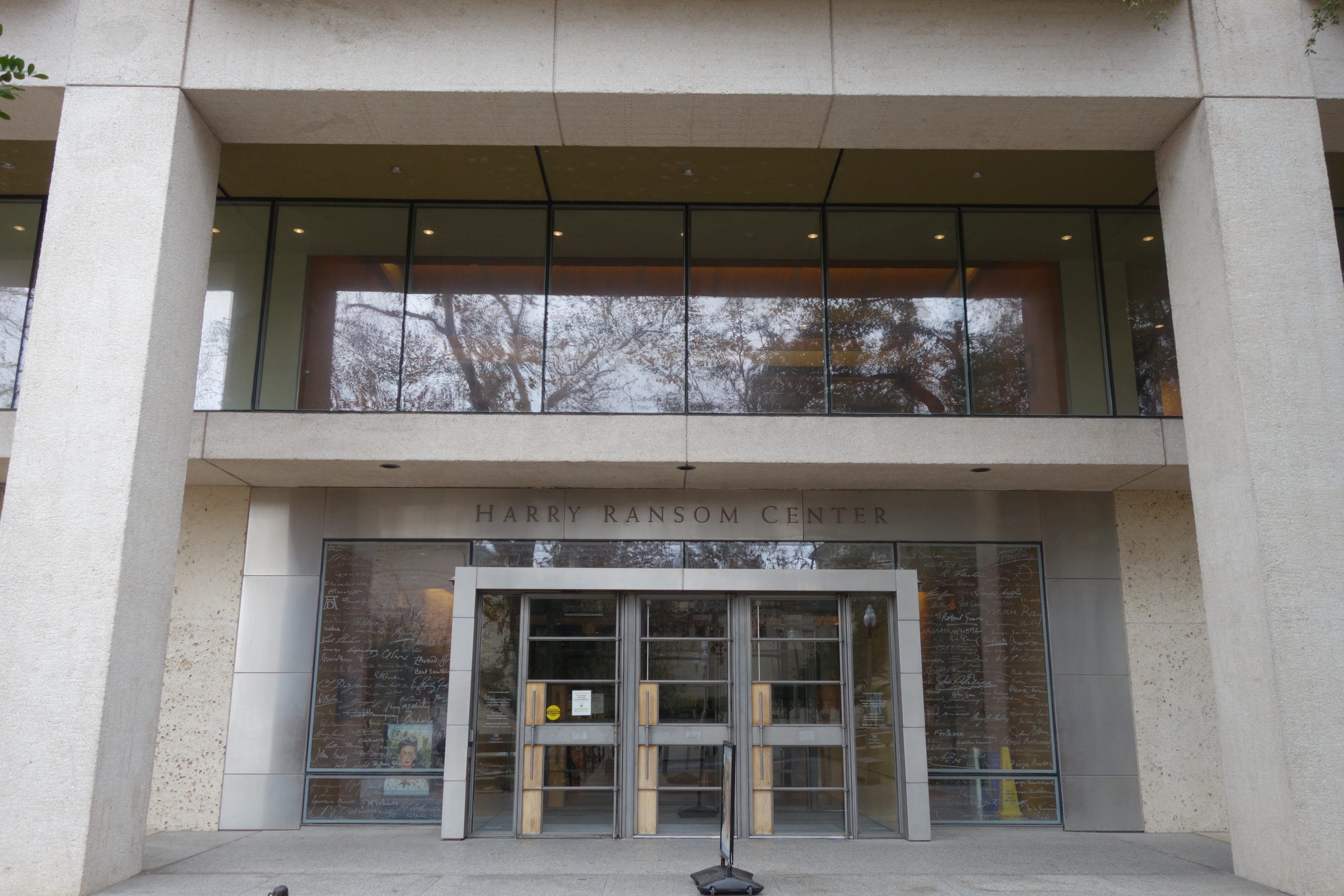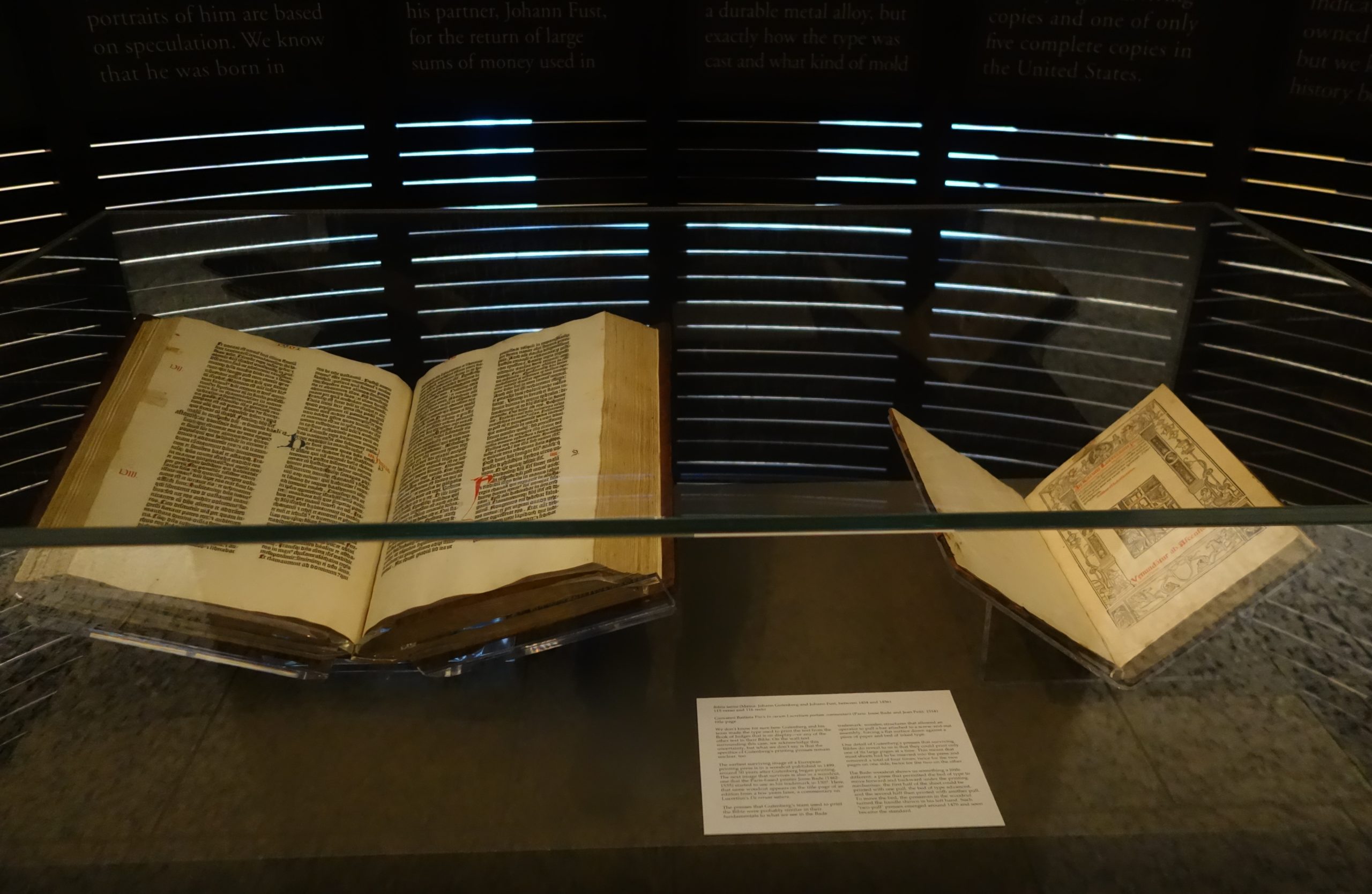Niépce Heliograph
French photographic pioneer Joseph Nicéphore Niépce created his heliograph in 1827, using light-sensitive bitumen on a pewter plate inserted into a camera obscura. It is arguably the first successful real-world photographic experiment and certainly the oldest one to have survived. In modern terms, it’s simply a photo of his yard, taken from his window. But for photography and cinematography enthusiasts, it’s the Holy Grail.
The heliograph is housed at the Harry Ransom Center on the campus of the University of Texas in Austin, along with other historic artifacts, including one of only four complete Gutenberg Bibles in the United States. The Center also contains countless cinematic artifacts, including the archives of David Selznick.
For more information on the Ransom Center and the Niépce heliograph, click here. And scroll down for my photos of the heliograph, which is best viewed from a few feet away, and at a slight angle. In other words, ironically, it’s more easily viewed in person than by looking at a photograph. The last photo is of the aforementioned Gutenberg Bible.
(All photos are copyright MeierMovies, LLC, and may not be used without written permission and copyright credit. Click each photo for a larger, high-res version.)
